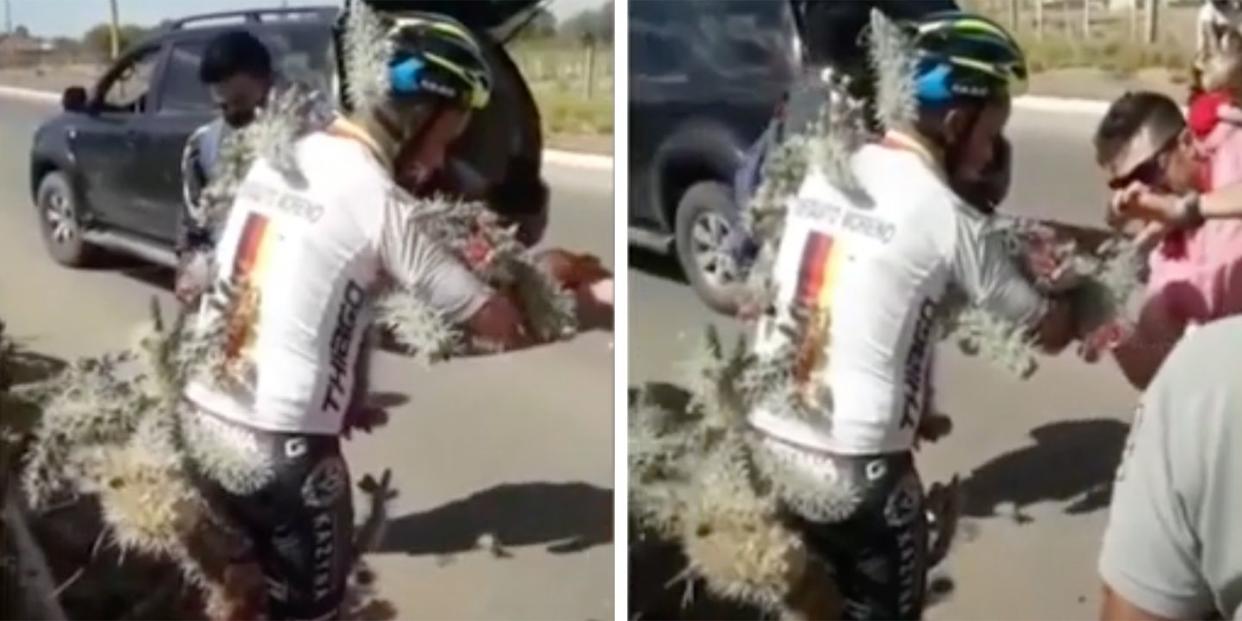This Cyclist Crashed Into a Cactus... and Was Covered From Head to Toe in Spikes

"Hearst Magazines and Yahoo may earn commission or revenue on some items through the links below."
Crashing during a road ride can be an incredibly painful experience. If you avoided a major injury, like broken bone or a concussion, smaller issues like road rash can be hard to deal with, and washing gravel out of cuts is one of the most painful feelings a cyclist can experience.
But that’s nothing compared to what racer Diego Moreno dealt with in a crash in Buenos Aires, Argentina. While riding in a group of three, the 39-year-old cyclist slammed into a bed of cactus after hitting a small pothole in the road.
Want more of the latest cycling news? You would love Bicycling All Access ????
Luckily Moreno didn’t appear to be gravely injured, though he was captured on camera covered from head to toe in cactus spikes—a situation that no one can find comfortable. While some locals attempted to help pull some of the sticky cactus off of him, as shown in the video, he had to be rushed to the hospital in order to have thousands of the thorns removed.
He later told local Argentinian media that because he was wearing a helmet and sunglasses, he avoided any facial injuries. “Because the way the spines got embedded in me, it could have blinded me,” Moreno told the media.
Moreno was reportedly riding at the back of the group, and he missed sighting the pothole in the road. (This is why group ride etiquette matters: Always point out obstacles on the ground, especially when crashing could mean hitting a cactus!)
Of course, the irony is that another succulent—aloe vera—contains a gel that might soothe some of the cactus spike sting, but Moreno might be a bit nervous about getting near any spiky plant anytime soon. (Maybe he could try these natural road rash healing remedies instead.)
As a reminder, here are a few steps to follow anytime you crash:
Slow down: You don’t need to jump back on your bike as fast as possible—slow down and assess the damage to yourself and your bike before pedaling off.
Basic first aid: Before anything else—even before you get up—check your body. Can you feel all of your limbs, are all bones still under your skin, and is there a lot of blood?
Concussion: Checking to see if you bent or cracked your helmet is a quick way to assess whether you hit your head on a ride.
Be prepared: It’s important to have everything you’ll need in case of a crash—especially when you’re planning an adventure to the middle of nowhere. Always carry basic bike tools—a multitool, chain link, spare tube, and mini-pump, at least—plus a few basic first aid supplies, like a large bandage and some Ace wrapping.
You Might Also Like
